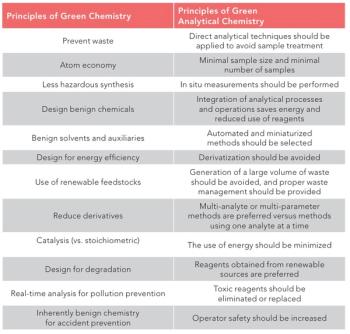
- LCGC North America-12-01-2006
- Volume 24
- Issue 12
Market Profile: Electronic Lab Notebooks
Laboratories use paper notebooks to document research, experiments and procedures, similar to that of a personal journal or, in some cases, a scrapbook. Laboratory notebooks are essential wherever scientific research is conducted, where data is collected, and where ideas that could be patented are developed. The lab notebook is often considered to be a legal document and can be used in court as evidence.
Laboratories use paper notebooks to document research, experiments and procedures, similar to that of a personal journal or, in some cases, a scrapbook. Laboratory notebooks are essential wherever scientific research is conducted, where data is collected, and where ideas that could be patented are developed. The lab notebook is often considered to be a legal document and can be used in court as evidence.
However, more R&D labs are abandoning the bound paper notebooks in favor of electronic laboratory notebooks (ELN), software programs that collect and organize data from unrelated sources into a single repository.
Electronic lab notebooks.
ELNs are new technology and offer many advantages. They allow easier collaboration among user groups, better recordkeeping, and can be made more secure than their paper counterparts. ELNs provide a means to secure intellectual property, while enabling access to common laboratory software and desktop applications.
The life science sector has been the early adopter of ELNs. ELNs have become an important tool for regulatory compliance and electronic recordkeeping. They are useful especially in large organizations, as ELNs are able to support enterprise-wide data warehousing, querying, and reporting for effective decision-making.
Despite these advantages, potential users of ELNs still have been reluctant to transition to a paperless laboratory. The direct cost of a system has become less of an issue as prices have dropped considerably. However, the indirect costs such as implementation, customization, and training have prolonged market resistance. Other issues include data security, speed, ease of use, system flexibility, and maintenance.
Nonetheless, ELN developers have introduced advanced systems that certainly have lowered these barriers. The ELN market is estimated at $80–90 million for 2006. The growth of the ELN has attracted many laboratory software/informatics companies into the market wanting to integrate them into their platforms. The market is expected to continue to grow at a rapid pace over the next few years as ELNs move into the mainstream. In fact, several biotech and pharmaceutical companies already have gone paperless — setting a standard that others can follow. Long-term growth of the technology is expected to be strong, especially as developers continue to release application-specific solutions.
The foregoing data was extracted and adapted from Instrument Business Outlook, an SDi publication, and SDi's Global Assessment Report, 9th Edition. For more information, contact Glenn Cudiamat, VP of Research Services, Strategic Directions International, Inc., 6242 Westchester Parkway, Suite 100, Los Angeles, CA 90045, (310) 641-4982, fax: (310) 641-8851, e-mail:
Articles in this issue
about 19 years ago
Ionization Revisitedabout 19 years ago
Peaks of Interestabout 19 years ago
Method Reproducibility — A Case Studyabout 19 years ago
Practical Guidelines in the Care and Maintenance of Capillary GC Columnsabout 19 years ago
2006 Index of Authors and SubjectsNewsletter
Join the global community of analytical scientists who trust LCGC for insights on the latest techniques, trends, and expert solutions in chromatography.




